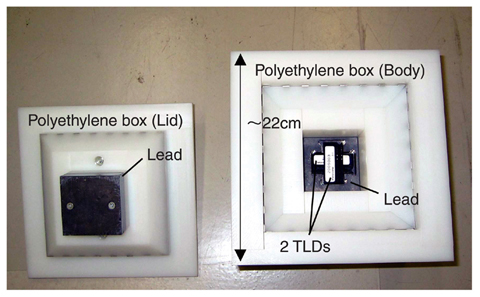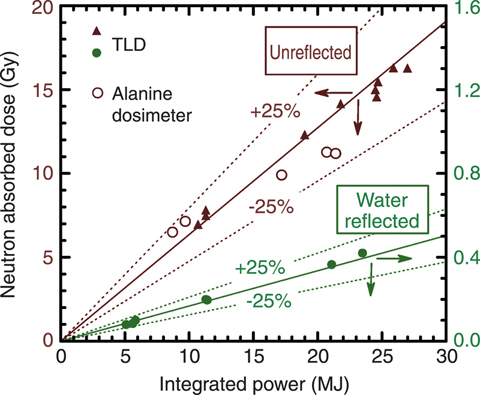
Fig.5-14 TLD outlook

Fig.5-15 Measurement results
The JCO criticality accident with the death of two workers which occurred in the autumn of 1999 is still fresh in our memory. Such an accident must not happen again. It is, however, also necessary to develop impact evaluation methods and counter action techniques in case of unlikely accidents.
The International Atomic Energy Agency (IAEA) provided technical guidelines for treatment of injuries due to heavy irradiation in a criticality accident, and in particular stipulated technical performance standards for the dosimetry. The guidelines require
・appropriate medical care for heavily irradiated persons,
・sufficient communication to the public, and
・assuring those not significantly irradiated. Technical requirements are thus made that
・the dose can be measured in terms of dose absorbed in the body,
・in the range from 100mGy to 10Gy, and
・ total radiation measurements be within 50% uncertainty in the first 48 hours, separate measurements for neutrons and γ-rays be within 25% uncertainty for the first week.
To demonstrate that these technical goals are achievable, first, widely utilized dosimetry methods were reviewed, and then, a thermo-luminescence dosimeter (TLD) (Fig.5-14) suitable for easy neutron dosimetry was employed. Experiments were performed in the Transient Critical Experiment Facility (TRACY) to irradiate the TLD with strong radiation as in a criticality accident. Radiation doses were varied by changing the distance between the TLD and the TRACY core or by reducing neutron leakage with a water reflector installed around the TRACY core. Another kind of dosimeter and computer simulation were used together, to obtain the correct irradiation dose. It was also confirmed that it was feasible for the measurement results to be obtained within 48 hours after the experiments. The TLD was originally designed to measure the dose equivalent instead of the absorbed dose, so a calculation method with a computer using conversion coefficients between those doses was established as well.
Fig.5-15 shows the neutron doses measured with the TLD; measurement error was within 25%. This not only satisfies the IAEA requirements but also demonstrates the capability for more rapid neutron dose measurement.
The intensity and characteristics of the radiation used in these experiments simulated a criticality accident well. To put the TLD to practical use, it is, however, still necessary to investigate if this measurement method is applicable in actual nuclear fuel facilities, and if the TLD can be handled appropriately under the extreme conditions of a real critical accident.